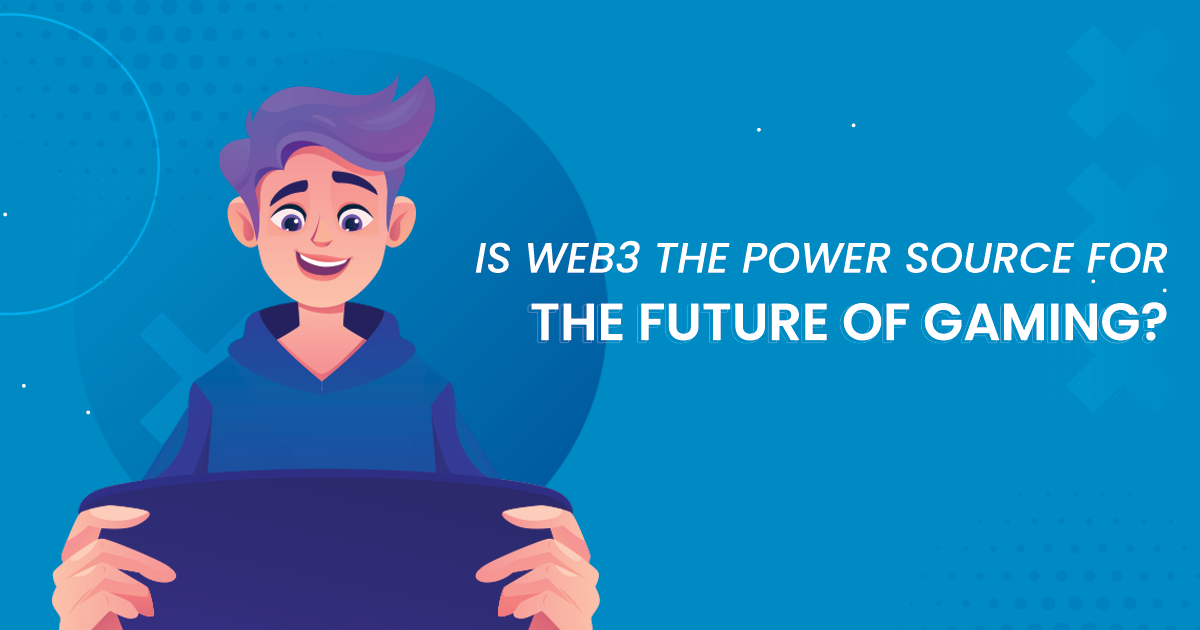About a decade and a half ago, the world of gaming and the world of the web were distinct from each other, at least in terms of the possibilities they presented. The offline world of gaming was enhanced with rich graphics, intense gameplay, and a good story. At that point in time, thanks to the sluggish speeds of the Internet, nothing more than eight-bit gaming could be supported across the internet.
As time passed on, games also evolved to be symbiotic and connected with the web ecosystem. The very way in which games were played started to change. There was a time when you could just buy compact discs containing the game software. With these blazing fast Internet speeds, the game could easily be downloaded from the official website. Mobiles added to the gaming growth in both ways – versatility and connectivity!
Ever since then, there has not been any looking back for games and the way it is intertwined with the web. However, there were a few major drawbacks when it came to the gaming world. The first of them is that the game assets started to lose their relevance outside the game ecosystem. The worst part was that these virtual assets cost people quite a lot of money. Did they give returns in any way? It is both yes and no!
Web3, the latest version of the web (which is quite a long way since Internet explorer debuted in 1995), it’s a big bliss to the world of gaming. Web3 can be considered the finest point of confluence between gaming and the web… And blockchain technology as well. It would not be an exaggeration to say that the world of Web3 is powered entirely by blockchain technology.
How Does Web3 Help In Gaming?
When it comes to Web3, we are not looking at a network of connected computers that just are involved in the transfer of information but rather in the act of authenticating some of the biggest key decisions made by the community itself. This is perhaps the most democratic version of the web.
One of the most crucial elements of the Web3 space is non-fungible tokens, commonly abbreviated as NFTs. These NFTs represent digital assets on the blockchain that do not die with time because a certain central authority decides to pull the plug. They can only be destroyed if the user or the community decides to do so.
Looking At It Through The Lens Of A Gamer
Let us look at the way gaming assets had been looked at until the introduction of Web3. They did enhance the power of the gamer when it came to gameplay, bestowing upon them certain tactical advantages.
However, if the game was rendered obsolete, the asset would not even amount to anything. With the introduction of NFTs, the asset is not just confined to the game but rather attached to a technology that stands the test of time.
Therefore, a person who invests in these gaming assets could probably sell them to other people who would like to play the same game. In this way, the word “asset” makes a lot of sense because the people who buy that asset can actually reap returns on their investment.
Here the highlight is, that the asset that people purchase can hold value for a long time. It might not be surprising to see even these gaming assets acquire vintage value after some time passes.
This will also create a new breed of games that have certain interdependencies among each other. Since the assets purchased for one game have considerable longevity, they might as well be used in another game, giving users the edge to engage themselves in immersive gameplay across multiple games using a single digital asset. This would create a symbiotic network of games and also enhance the trade of these virtual assets. The trade of these assets is no longer confined to gamers who play that particular game but across multiple communities of gamers.
P2E… The Silver Lining
Until the entry of Web3, the earning potential with gaming was confined to tournaments. You could be the best player on the planet but if you did not have access to visit these tournaments, all your gaming skills would amount to nothing, at least in terms of money.
The introduction of NFTs through Web3 has ushered a new era in the world of gaming called play-to-earn gaming, commonly abbreviated P2E.
P2E has become so powerful that a lot of people in countries like Vietnam, Thailand, and the Philippines have taken up playing these games as their main source of income. Although these games might not have a lot of elements that evoke empathy, the introduction of the P2E cricket game, the Meta Cricket League by GuardianLink through Jump.trade is bound to make big waves in the world of P2E gaming.
With P2E, gamers can directly monetize their time and efforts. In addition, they could also participate in tournaments, and it would not be an exaggeration to say that they are celebrities in their own right!
Closing Words
Needless to say, Web3 is the powerhouse of the new world of gaming. It is so powerful that any game that does not have a Web3/NFT element is bound to be rendered obsolete, lost in the sands of time.
It is high time that the world of gaming concentrates more on rewarding the community and engaging people in immersive gameplay rather than just looking at means to make money by releasing new games and selling assets. Web3 will change the equation of gaming forever, resulting in a new era of gaming. The future, It’s already here!
